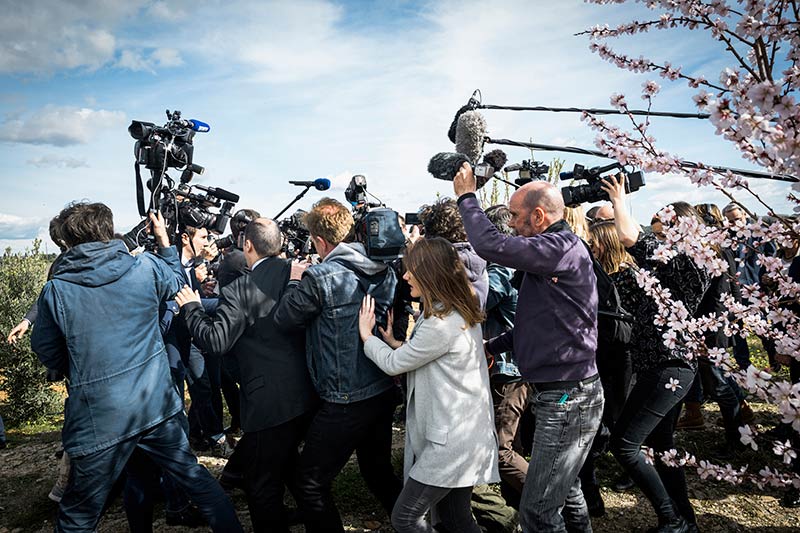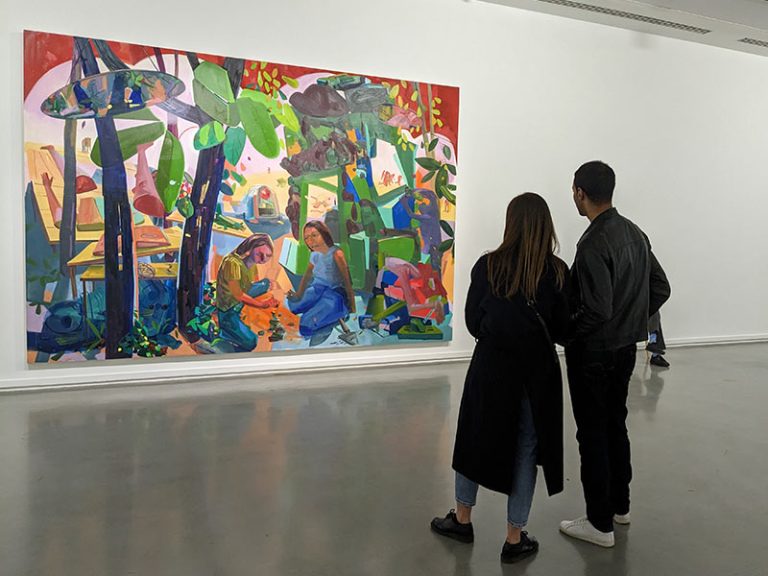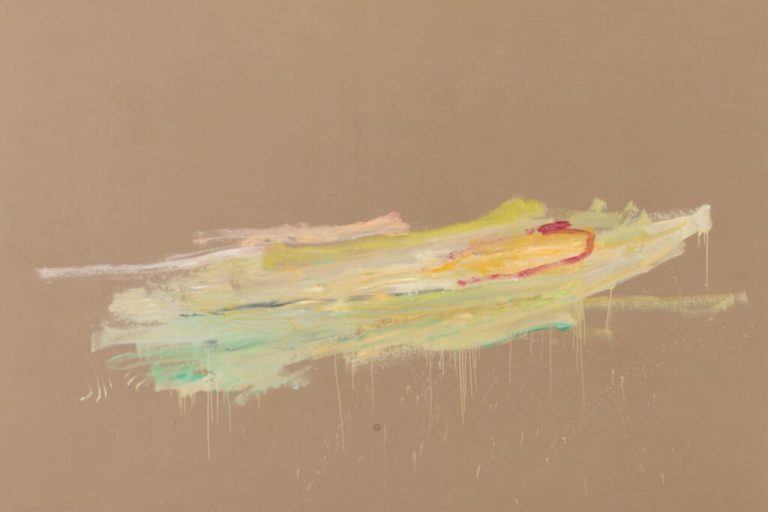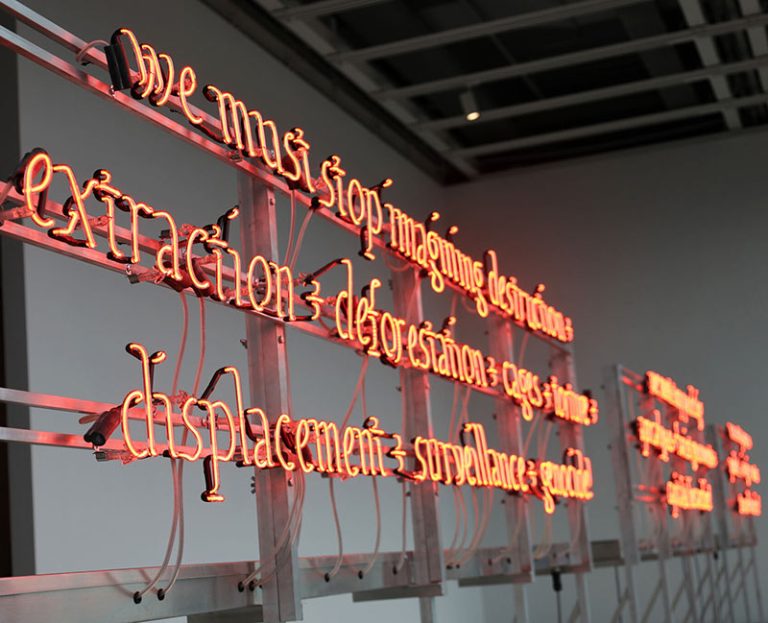Since November 7, at the National Archives, “50 years in the eye of Release » tells five decades of contemporary history in photographs. Under the arcades of the main courtyard of the Hôtel de Soubise, the giant format reproduction of the daily front pages with photographs of Jean-Paul Sartre, Coluche, Barbara or the mobilization in Iran for women’s rights caused a sensation by their narrative power and by their title. The mosaics of the front pages of Libé, assembled by decade, and the photo reports commented by their authors are just as much. The occupation of the Lip factory, the battle at Larzac against the plan to extend the military camp, the fall of the Shah in Iran, the civil wars in Northern Ireland and Lebanon, the victory of François Mitterrand in the election presidential election of 1981, etc. : the great fights or the great moments of these years are remembered, or discovered depending on the generation to which we belong.
“The first act of this exhibition, even before it existed, was to prove that these photographs considered disposable are, on the contrary, photographs that stick to the wall through their view of the world. Because the approach of “Libé” is to call upon author photography from the start that breaks the codes,” explains Lionel Charrier, photo director of the daily since 2015. Some have passed into posterity like those of Raymond Depardon from the fall of the Berlin Wall or the portraits of Jean-Luc Godard or Keith Richard by Richard Dumas.
At the Grenoble Museum, a story of the world from 1945 to the present day is told when Antoine de Galbert decides to endow the establishment with a collection of photographs. Carried out with Guy Tosatto, director of the museum until last December, the selection was made without discrimination of genre opposing documentary photography and photojournalism, “without looking for a rare print or a famous name, guided only by the historical and social dimension of the image, while illustrating the determining role that photography plays in the development of our perceptions and contemporary mythologies”specifies the former director.
From March 19, it is the major photographic commission “Radioscopie de la France”, supported by the National Library of France and launched in 2021 by the Ministry of Culture “to support photojournalists and the press sector”which will present through nearly 500 prints, the vision of the 20 photographers selected for “draw the contours of a post-health crisis France” while other structures in the region (festivals, art centers or museums) will focus on a certain number of them.
Photos that make history
This first half of 2024 offers a nice overview of the different variations of news photography. It is not reduced to press photography, produced in a specific time frame and context with specific production and distribution constraints. Long-term photographic work, in touch with reality and social issues, whether social, economic or environmental, has developed outside the press. Over the decades, the ranks of photographers wishing to bear witness to their time have grown, sometimes supported in their enterprise by residencies, scholarships, prizes or even by certain press titles.
“News photography is a circulating photograph, which carries an idea, a sensitivity, a look at the world and individuals, and crystallizes a moment in history, sometimes becoming an icon and crossing time”underlines Marie-Ève Bouillon, historian and archivist, photography project manager at the National Archives and associate curator of the exhibition “50 years l’oeil de Release“. “Elevation to the rank of icon is as rare as it is unexpected”indicates photography historian Françoise Denoyelle. “It sometimes resurfaces many years later as a historical or sociological document… or to be displayed on the walls of museums or galleries. It is then part of History, becomes part of the national and international heritage. Its symbolic and universal aura transcends time. » Many of Henri Cartier-Bresson’s photographs passed down to posterity were as part of press commissions, as recalled in 2021 by the exhibition “Henri Cartier-Bresson, Revoir Paris”, at the Carnavalet museum, or “L ‘another coronation’ more recently at the Henri Cartier-Bresson Foundation.
A larger audience
Interest in news photography has been evolving for some time, and so has the way we view it. This is demonstrated by the current exhibitions at the National Archives Museum or the Grenoble Museum, but also the programming of photo festivals, major voices for this photographic genre. Some with strong distinctions in their choice of photographers such as Visa pour l’image, an international festival for photojournalism, and the Rencontres d’Arles where photojournalists however remain on the fringes. The other festivals which have flourished since then have broadened its visibility. The photographic summer of Lectoure, the Bayeux prize for war correspondents in Normandy, Photaumnales in Picardy, the La Gacilly Photo festival in Brittany or the Regard festival in Cergy, L’Œil Urbaine in Corbeil-Essonnes, the MAP festival in Toulouse , or the Photographic Walks in Blois: from one to the other, the editorial lines vary, driven by the desire of their founders to make the world, near or far, read differently than that seen or heard in the media or on social networks.
Exhibitions, meetings and actions for schools in terms of image education form the programming schedule of these events which, although subject to increasingly restricted budgets, are experiencing growing success with the public, including for the most trying subjects. The Bayeux War Correspondents Prize thus records an increase in attendance year after year: nearly 50,000 visits last year, between October 9 and November 12 for the 30th anniversary of the Normandy festival. “In recent years, it is mainly the attendance at exhibitions that has increased,” points out Aurélie Viel, responsible for programming. Reporters Without Borders (RSF) also knows “a real enthusiasm around the recent albums of the “100 Photos for press freedom” collection, dedicated to photographers who cover the upheavals of the world like Patrick Chauvel, Abbas, Véronique de Viguerie or Don McCullin”notes Perrine Daubas, editor-in-chief of this collection, the proceeds from the sale of which represent 30% of RSF’s overall budget.
A plural mobilization in the region, but Paris lagging behind
“News photography contributes to understanding the world”, recalls Lydie Marchi, director of the Lectoure Center for Art and Photography. Faced with the flood of anxiety-provoking information, the public and readers seek as much to decipher conflicts, social facts, environmental disasters as to broaden their perspective to other subjects that they are unaware of. “95% of our exhibitions are imbued with social issues and issues. They are made to establish a dialogue with the public because we are in territories where it is a question of reaching out to them,” explains Erika Negrel, general secretary of the Diagonal Network which brings together 29 regional photo institutions including the Lectoure art and photography center.
The war in Ukraine mobilized the members of the Diagonal Network who, from May 2022 to the end of 2023, offered, in partnership with the Odessa Photo Days festival, a cycle of exhibitions and meetings dedicated to the Ukrainian photographic scene. Collectives of photographers like Myop or Tendance Floue also find a showcase for their work, whether collectively through themes or individually like the work of Stéphane Lagoutte on Lebanon, currently presented at the Nicéphore Niépce Museum in Chalon-sur. -Saône, then at Simultania in Strasbourg, in February. Other structures in the region also regularly reserve a nice place for current photography in their programming, whether it comes from recent, ongoing or heritage work such as last year, at the Château d’eau in Toulouse, the return by Raymond Depardon and David Burnett on the years 1971-1973 in Chile, or the little-known photographs of the Spanish Civil War by Antoni Campañà shown at the Pavillon Populaire in Montpellier.
In this area, Parisian national institutions are largely absent if, in news photography, we include photography produced and/or distributed by the press. No author of this photographic genre has yet had a retrospective during his lifetime, unlike the great reporter Don McCullin to whom the Tate Britain devoted a retrospective in 2019. Only Henri Cartier-Bresson, ten years after his death, has benefited in 2015 of a rereading of his work. Since Depardon’s exhibition at the Grand Palais in 2013-2014 or that dedicated to Susan Meiselas at the Jeu de Paume in 2018, such retrospectives can barely be counted on the fingers of one hand. However, the success of the exhibitions by Steve McCurry (200,000 visitors) or Elliott Erwitt (180,000 visitors) at the Maillol Museum shows the public’s appetite.







